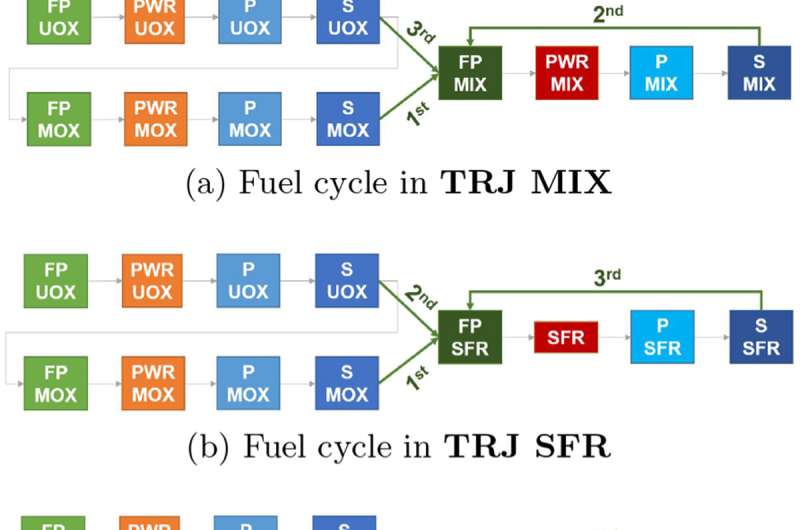How to predict future nuclear power requirements

Nuclear reactors will be needed to transition to a low-carbon future but they are time-consuming and expensive to plan and build, so getting a head start on future requirements is key. Marc Ernoult of Paris-Saclay University, Orsay, France and his co-workers have produced a model that takes into account the 'deep uncertainties' of our nuclear future and potential abrupt changes in resource need. This work has been published in the EDP Sciences journal EPJ Nuclear Sciences & Technologies.
France gets a higher proportion of its energy from nuclear sources than any other country (70.6% in 2020), but even there nuclear planning is vulnerable to sudden shifts, including those in public opinion. Expansion of nuclear power in the 2000s led to fears of a shortage of natural uranium and plans to deploy sodium-cooled fast reactors (SFRs) which use far less natural uranium than the older, cheaper pressurized water reactors (PWRs). After the rapid shift in public opinion arising from the Fukushima disaster in 2011, worries about the cost of SFRs replaced those about the availability of natural uranium, and the ASTRID project (Advanced Sodium Technological Reactor for Industrial Demonstration), seen as the first stage of SFR deployment in France, was halted in 2019.
Sodium-cooled reactors require a much greater accumulation of plutonium than PWRs, where plutonium recycling is only needed to stabilize its quantity throughout the fuel cycle. It can be relatively straightforward to model fuel requirements, even into the next century, if a steady state or a gradual transition between reactor types can be assumed, but this is not possible; the future trajectory is very uncertain and a sudden reversal of the current position cannot be ruled out. And, as Ernoult explains, "It takes decades to respond to a change of objectives: this is fast on the scale of fuel cycle physics, but very slow compared to possible changes in political attitudes or the industrial environment."
In this new study, Ernoult and his co-workers modeled plutonium recycling in the French fleet of nuclear reactors until 2140 using an optimisation algorithm. They followed three scenarios, each including an abrupt decision to switch from the low-plutonium PWRs to the high-plutonium SFRs at a different point in time. The trajectories of fuel use and energy production were compared to one involving an immediate choice to deploy SFRs and to one with no SFRs employed at all. "This is the first scenario study to have included this type of rapid change midway through the time period followed," adds Ernoult.
The analysis showed that it will be necessary to implement a plutonium multi-recycling strategy 30 years before the first SFRs are expected to come on board to prevent bottlenecks and minimize the amount of plutonium left idle. Although cost and reactor life are yet to be included in the model, Ernoult and his co-workers conclude that it should be possible to choose and pursue one strategy and still know that 'irreversible regrets' can be avoided if later circumstances lead to a switch to a different one.
More information: Jiali Liang et al, Impact of disruption between options of plutonium multi-recycling in PWRs and in SFRs, EPJ Nuclear Sciences & Technologies (2021). DOI: 10.1051/epjn/2021018
Provided by SciencePOD



















